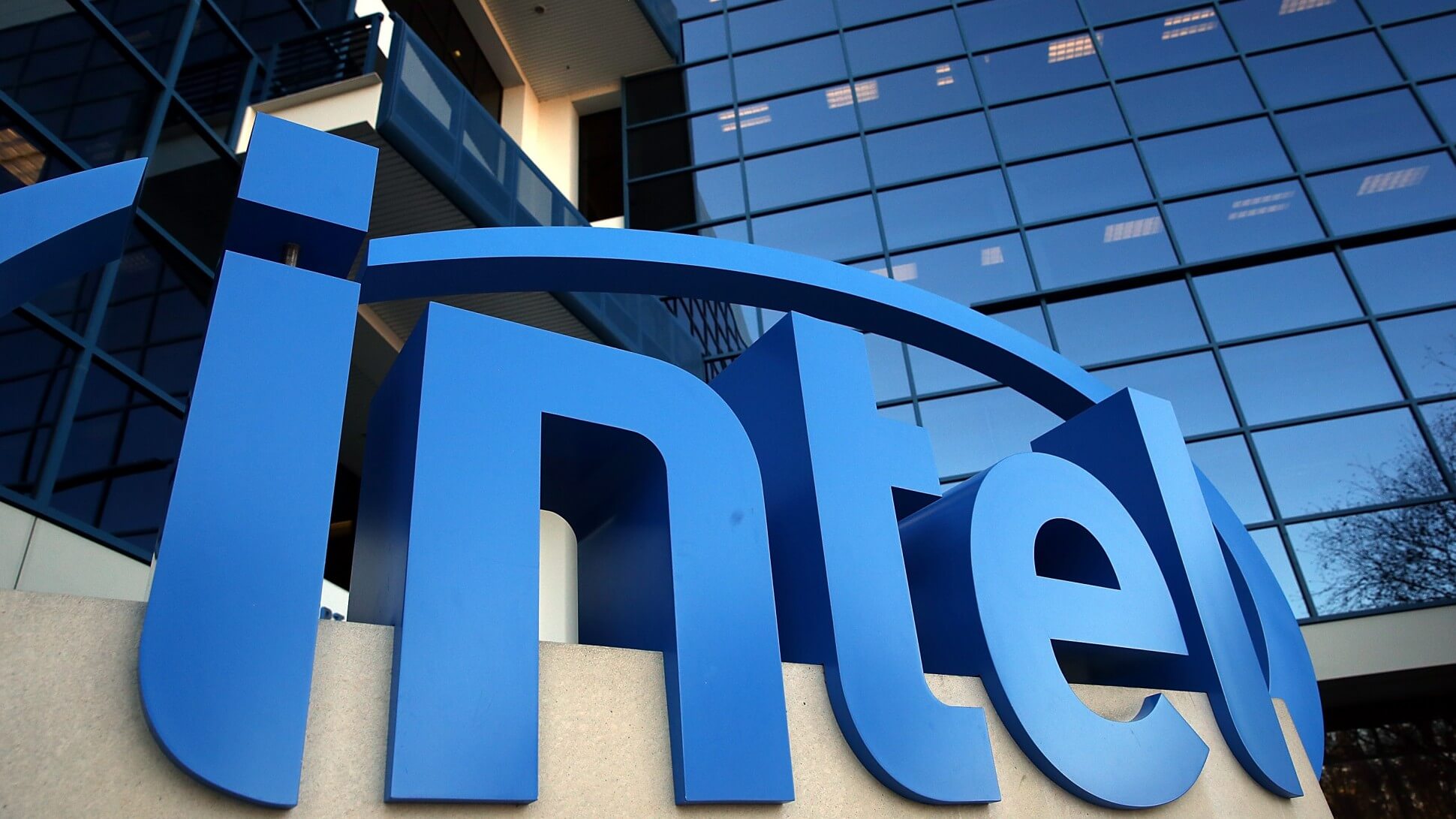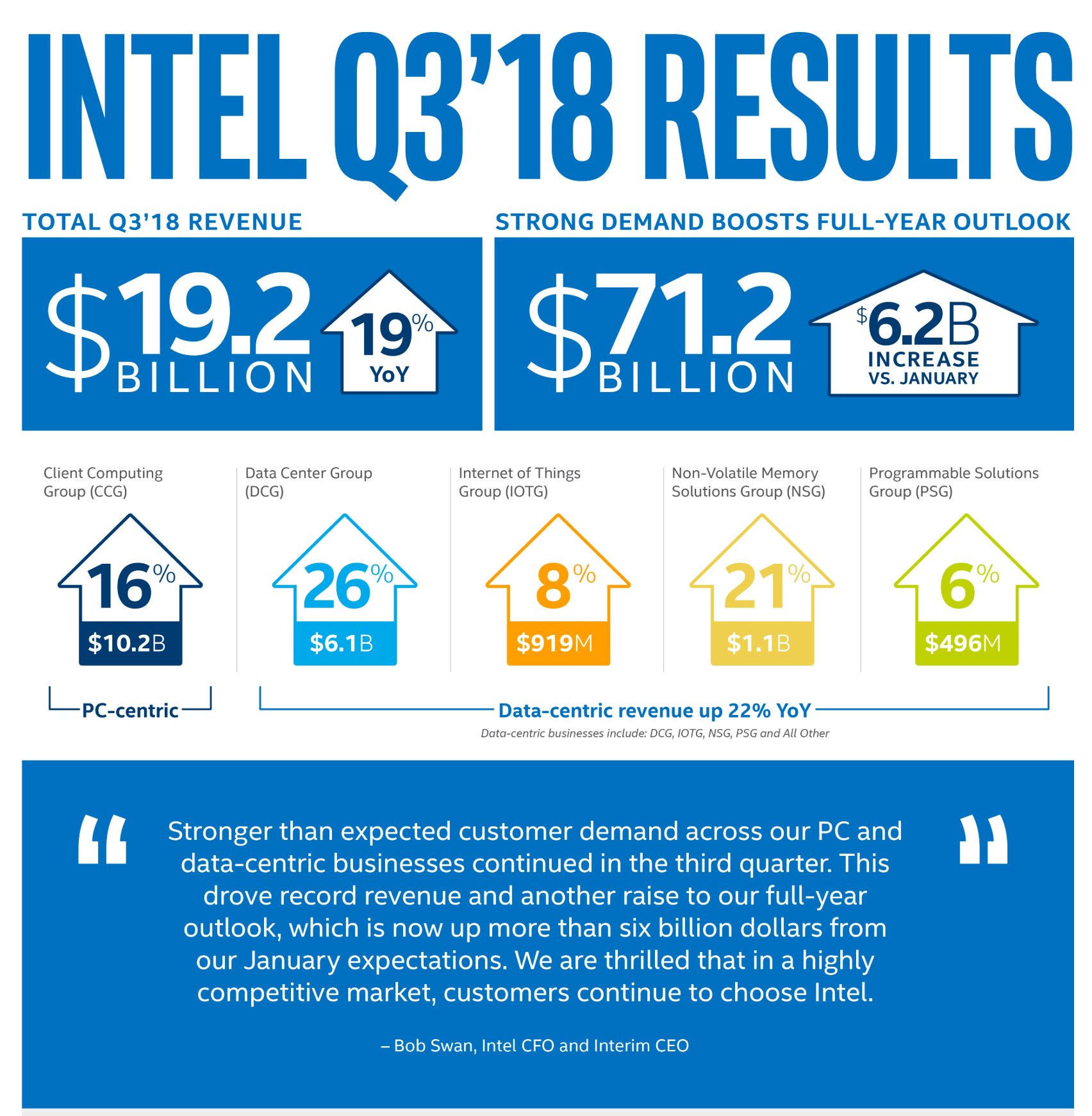Bottom line: Although possibly a little late to the party on Extreme Ultraviolet Lithography allowing for sub-10nm chips to be produced, Intel has had no problem posting strong financial figures. Growth in all major operating units points toward a positive outlook for the near future.

Posting record profits of $19.2 billion for the third quarter, Intel has achieved 19 percent year-over-year growth. Intel's Client Computing Group brought in the most revenue for the quarter at $10.2 billion trailed by the Data Center Group at $6.1 billion. Aside from client computing and data centers, Internet of Things, Non-volatile Memory Solutions, and Mobileye all set revenue records.
During the third quarter, Intel launched several products that have helped drive growth. The 9th generation Core series including the i9-9900K has brought new consumer attention back to the blue team. In data centers, Xeon Scalable processors earned Intel 95 new performance world records, even after patching the Meltdown exploit and two Spectre variants.

The more enterprise-focused Programmable Solutions Group posted improvements of 6 percent year-over-year. Acquiring eASIC to bolster its capabilities in hardware design and also launching the Stratix 10 Programmable Acceleration Card to tackle applications requiring massive throughput have been contributing factors to growth.
Outside of more traditional computing, Intel's automotive venture Mobileye posted 50 percent year-over-year growth and won 20 design awards. As autonomous vehicle capabilities are improving, Intel is positioning itself to remain highly competitive.
Looking ahead to the fourth quarter, Intel is expecting to hold steady. Future revenue is estimated at $19 billion for the fourth quarter with $1.16 earnings per share. For the full year, Intel is looking to hit $71.2 billion in revenue and $4.52 earnings per share. The company plans to spend $15.5 billion for the year and has an operating margin of 33 percent.